South Florida '22
February 24
A trip to South Florida can’t leave out the Everglades. So that was where we started. Got a late start and spent our night cruising. Snakes started moving just after sundown and was kicked off with a large mature cottonmouth.
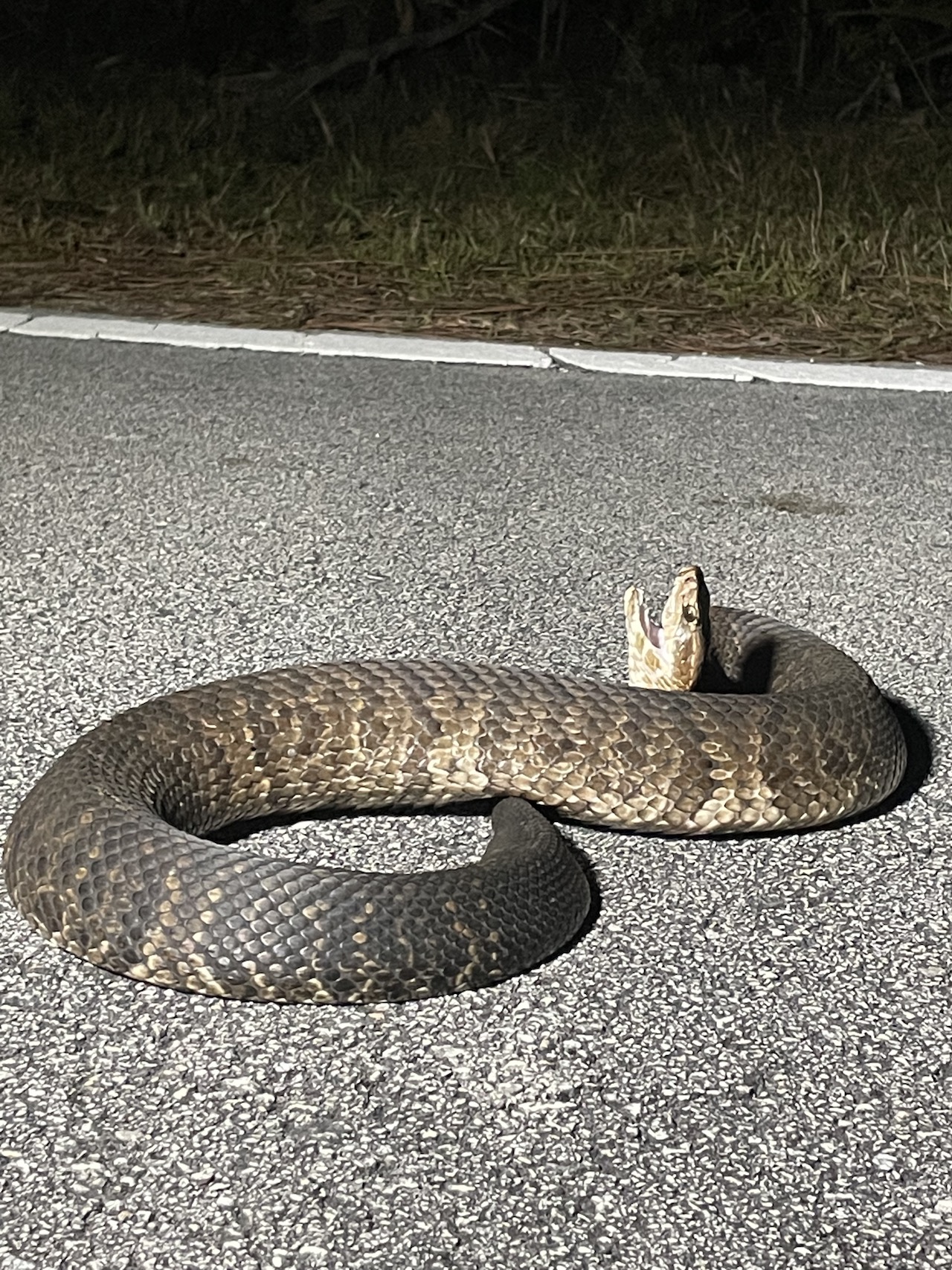
No better way to start off your time in Florida than a Florida Cottonmouth. They’re iconic. This was exciting becuase it was a large and thick individual. They were displaying the white on the inside of their mouth which I had never seen befoe even though it is a common behavior. Unfortunately, the bugs kept me from getting my camera out of the car. Not long after we had another cottonmouth. This one a juvenile with the characteristic yellow tail used to lure in prey. Next snake was a Peninsula Ribbon. It was a neat encounter as we saw a run over green tree frog on the road. This ribbon may have been on the way to find the frog, but we helped him out. It struck the dead frog out of our hands. We took a quick picture and left it to feast on the side of the road.
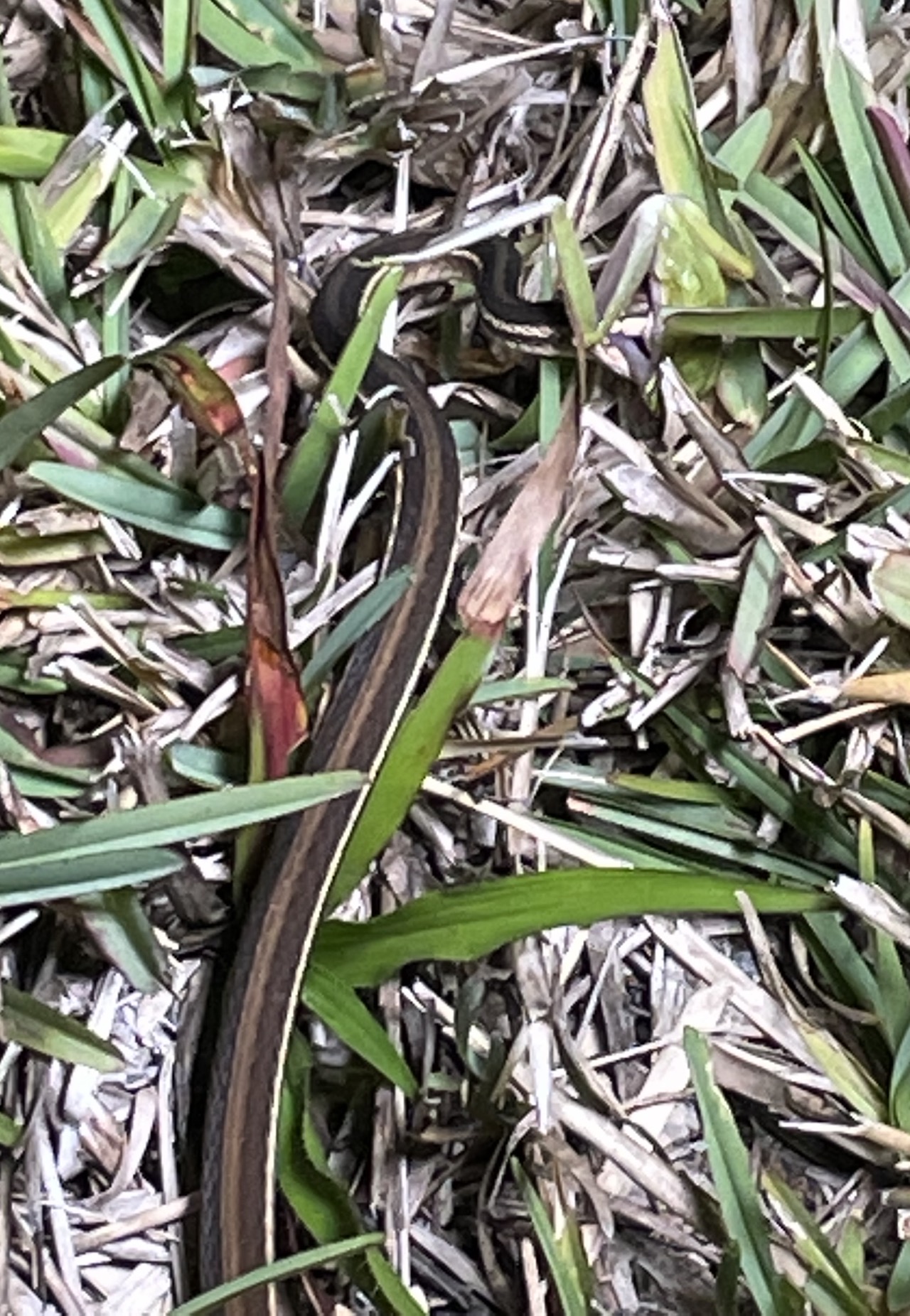
While the cruising was still hot we encountered a southern ringneck snake and a banded watersnake. Once it cooled off, we scouted some canals and watermanagement areas. We flipped a brahminy blind snake and shined a florida green watersnake.
February 26
After the Everglades, we took a little road trip up into Central Florida. This started in Big Cypress. Quick detour from herps to appreciate the Florida Panther. Didn’t get a picture unfortunately. In fact all I saw was a fat rear end and panther tail darting off the road. Luckily my companion had seen it walking along the road before it darted. It was crazy to come across one as their habitat is said to be at 5% of what it historically was. Significant conservation work has been underway since the 1970s when there were supposedly only 20 left. Now we are looking at numbers in the low 200s which is by no means large but good progress which should hopefully begin reversing the genetic bottlenecking. It was an honor to encounter the individual and it is a reminder of why I spend so much time in nature, to remind myself that the earth used to be significantly more natural and wild. There was a time before we were the undisputed apex predators in any environment. Honorable mention to seeing my first two soft shelled turtles crossing roads earlier that day. Also, came across a bobcat within the hour after the panther so I can confirm it was a correct identification on the panther.
After the chance encounters during the day, we began to cruise. Surprise, surprise! The first snake of the night was another florida cottonmouth. They are quite common down here. Second snake of the night was a florida green watersnake followed by a pair of banded watersnakes, brown watersnakes, and scarlet snakes. The scarlet snakes are common in South Florida and fun to see as they mimic the behavior of coral snakes really well. Their movement is jerking and erratic.
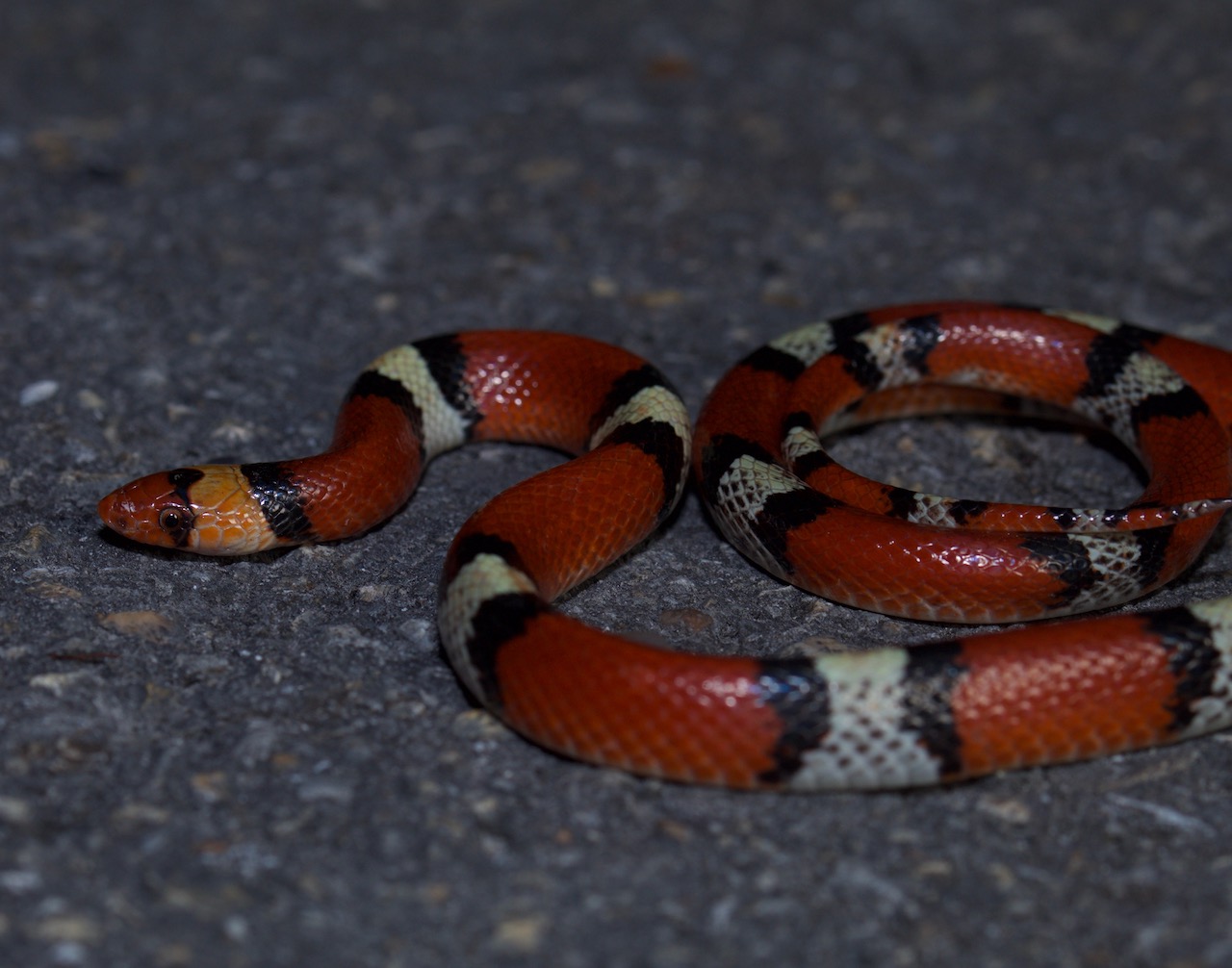
Always nice to see tri-colored snakes.
February 27
After hanging around Big Cypress, we went further into Central Florida around Kissimmee. On the way there we found a yellow ratsnake crossing the road. Excited to see one and have the opportunity to photograph it after not being able to photograph my lifer.
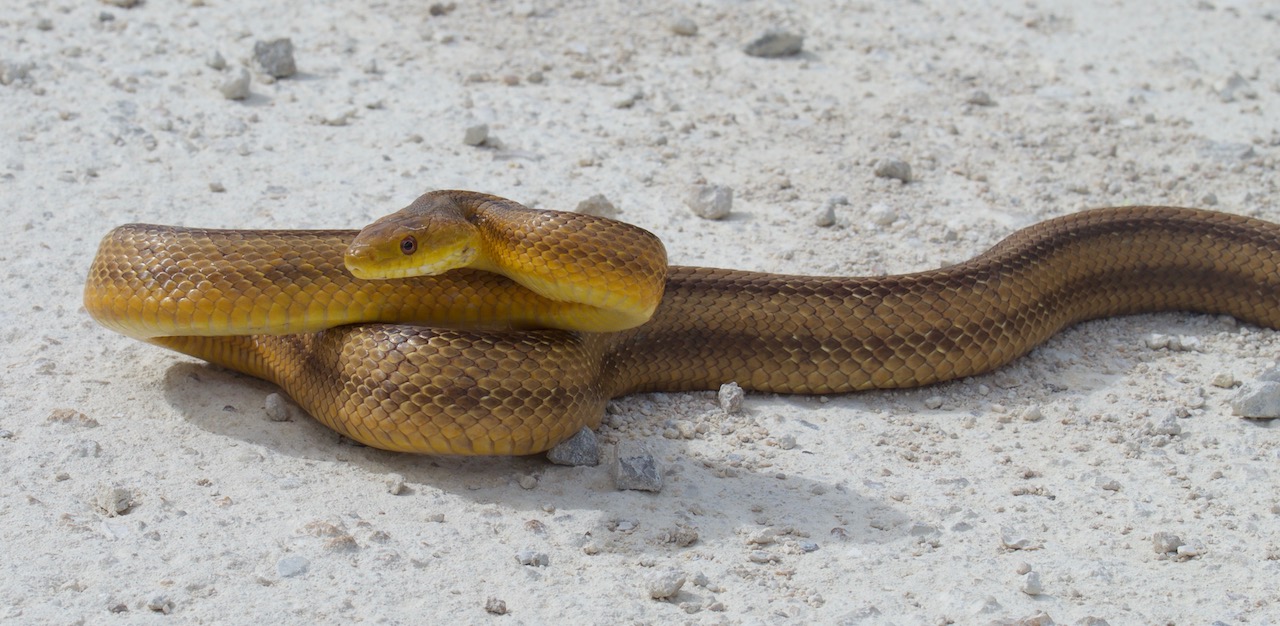
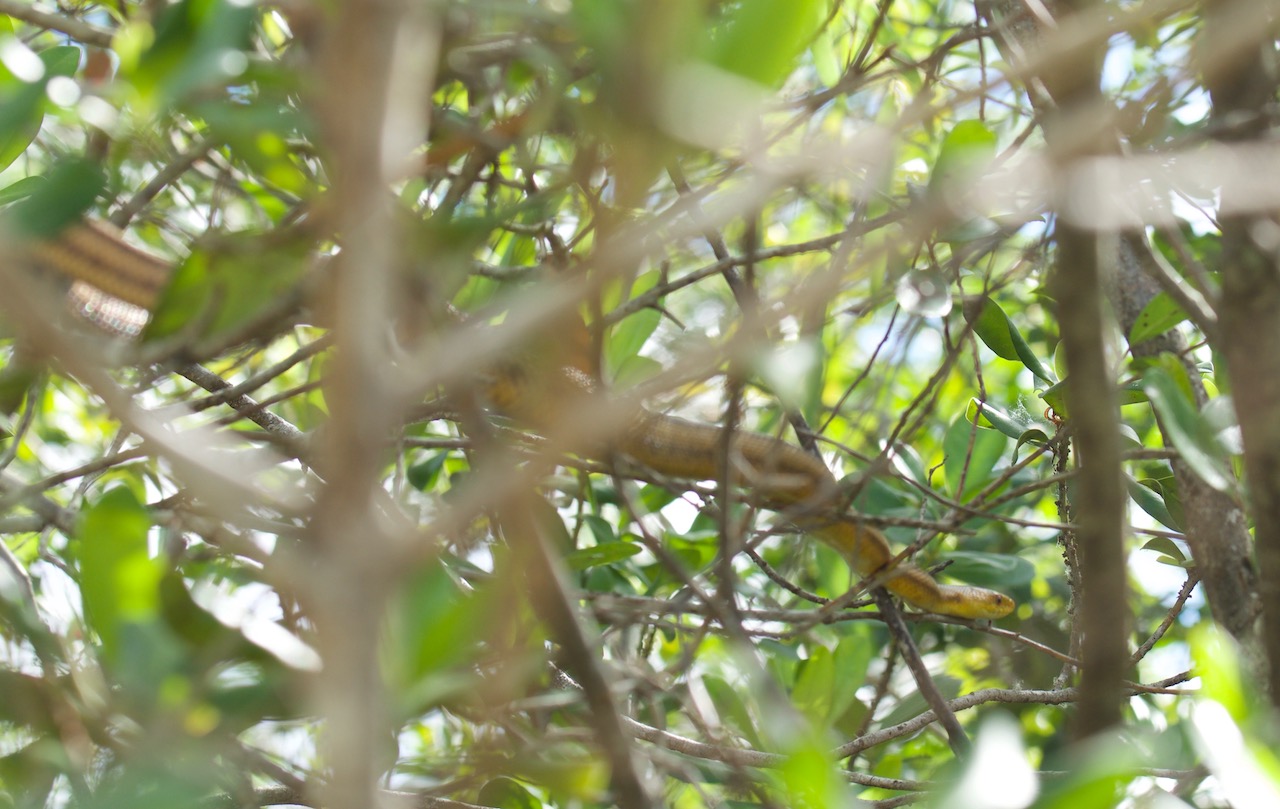
Defensive individual, but once they realized I was no threat they continued to cross the road and immediately climbed into a tree. I had never witnessed their tree climbing ability and couldn’t help but sit and admire for a while. Had to keep moving though, more snakes were calling our name. As the heat settled in we only saw racers during the day. As the day cooled off we shined around rocks bordering canals. Came across a banded watersnake, corn snake, and another yellow rat. This yellow rat was younger and not as thick as the previous one seen earlier in the day.
February 28
Got hiking around before the clouds and morning dew burned off and saw nothing more than a gopher tortoise basking on the edge of their hole. Once the heat settled in we saw a couple racers zooming across the path but largely spent most of the day avoiding the heat ourselves. As a storm front rolled in and threatened rain in the afternoon, we got back to cruising. Saw a couple snake tracks crossing the road which led us to believe that it was an optimal time to be out. It wasn’t long before we came across our next snake of the trip. A massive eastern coral.
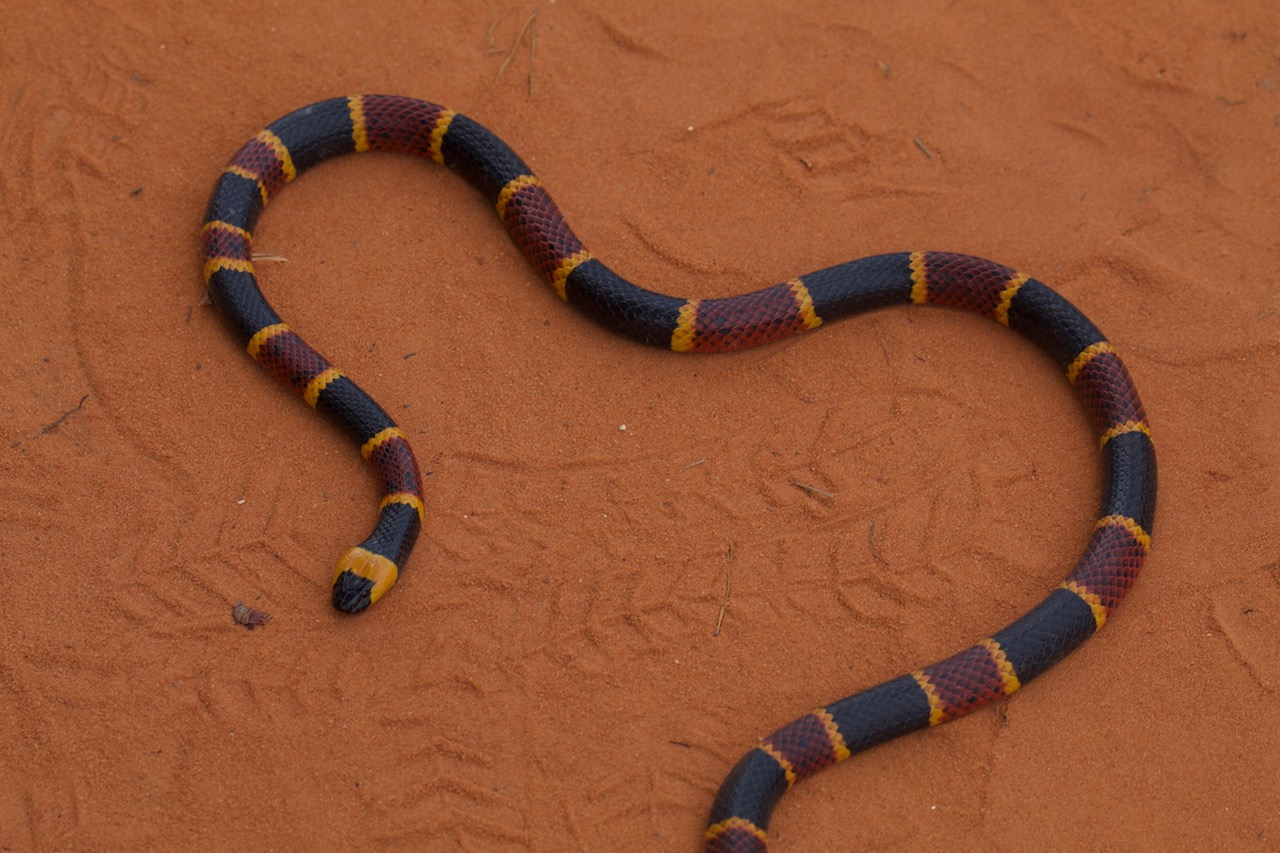
My lifer coral was significantly smaller than this one and it was noticeable how big it was from the car. They’re such unique and special snakes considering they are the only American elapids.
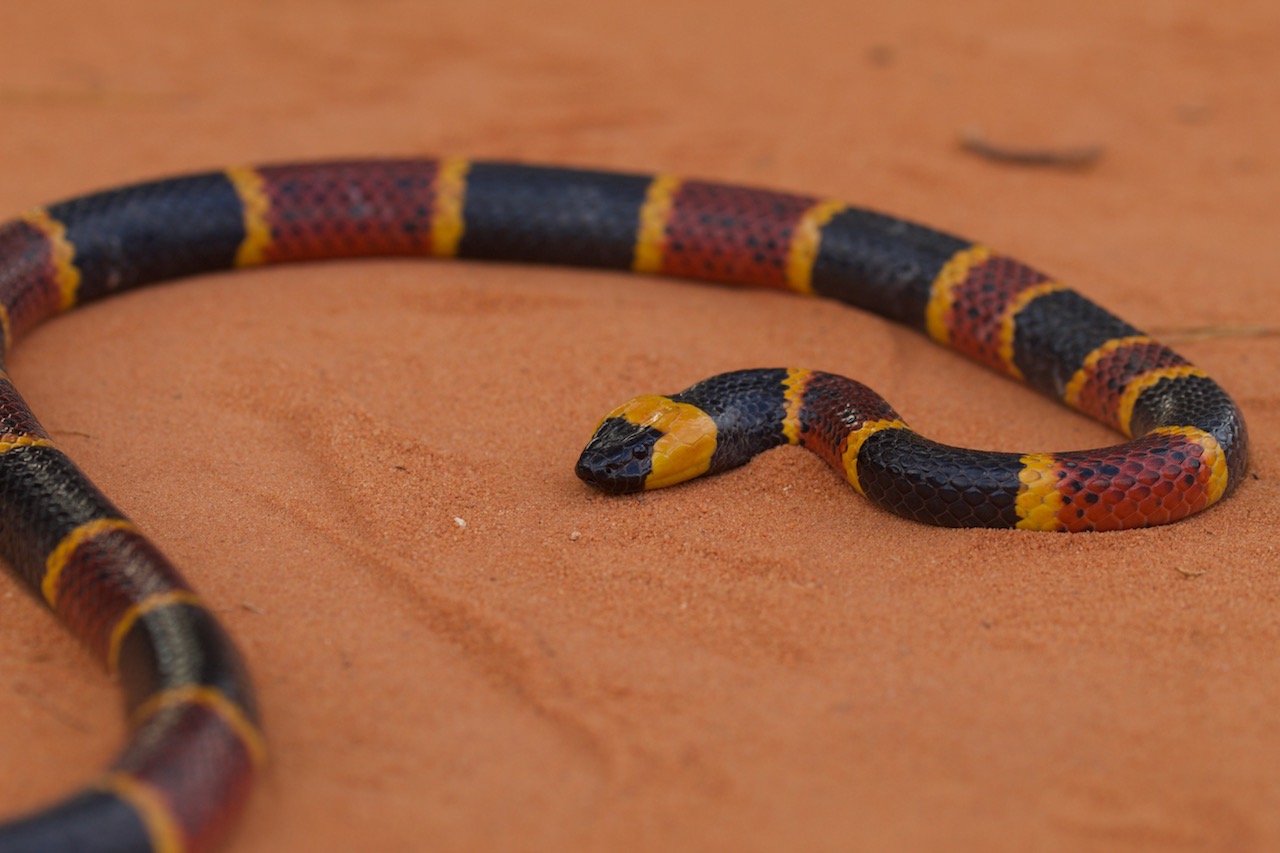
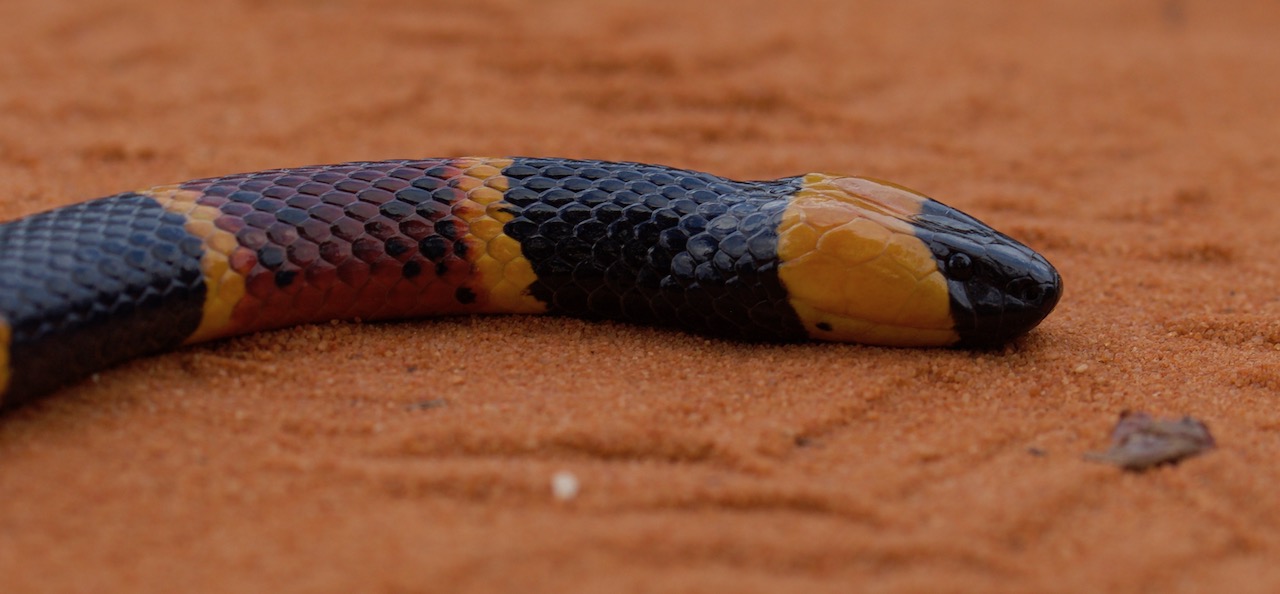
At some point, I’m going to have to make a trip to Arizona and Texas to complete the North American coral sweep. Always love to come across them!
With that under our belt, we shot further North to cruise for the night. We saw a handful of ribbons, corns, a banded, and a brown watersnake. The highlight after the coral was an eastern gartersnake. The light color adn checkering pattern was spectactular and drastically different than the garters from further north.
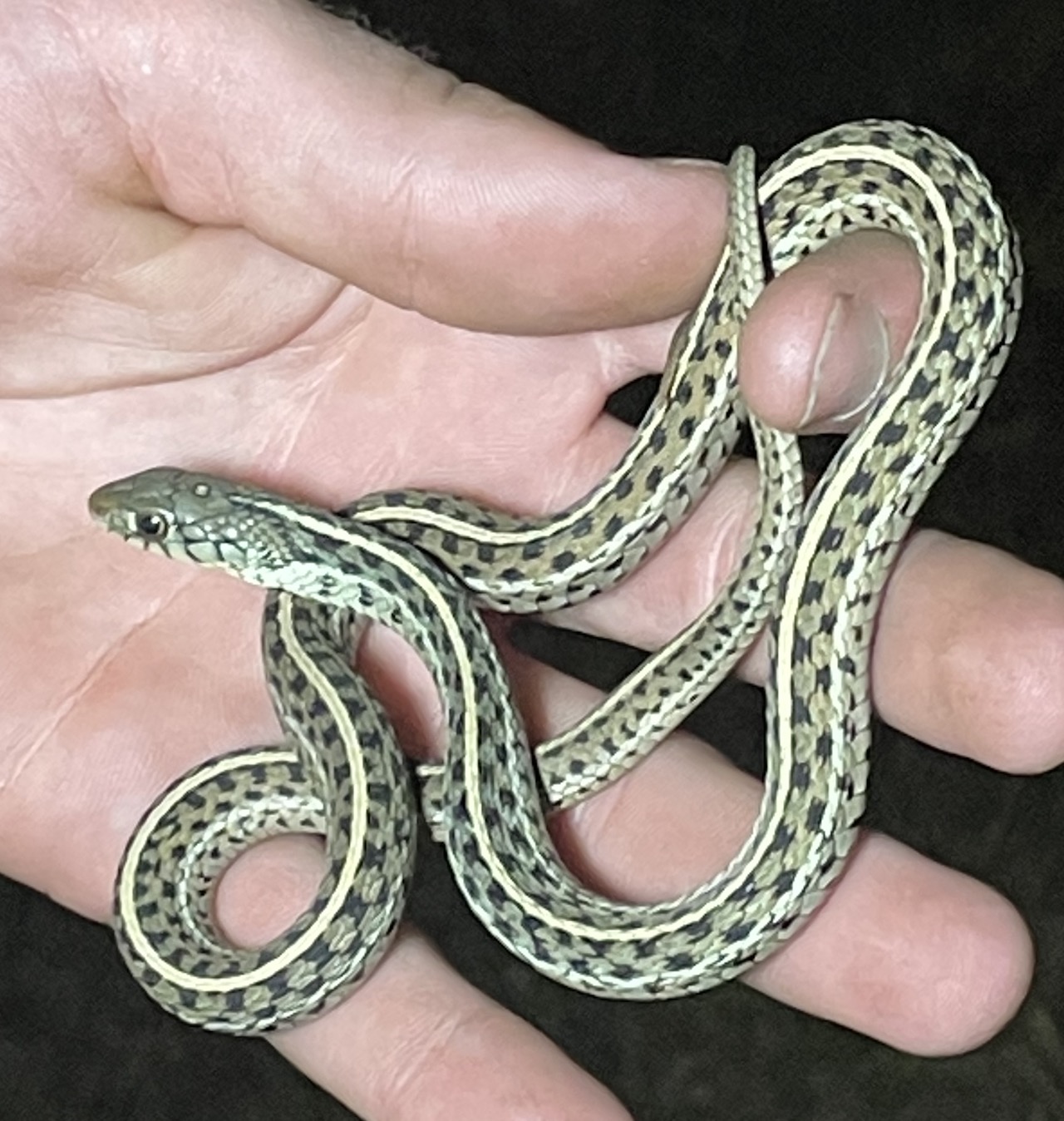
March 1
On our way out of Central Florida, we hiked up a black racer crossing a canal atop the lily pads which was fascinating to observe. Saw a ribbon and ringneck on the crawl near the same canal. Later that day we saw a corn crawling around on rocks near the water.
March 2-4
Spent the next few days looking for brooks kingsnake habitat. Found it but never had optimal conditions to hike them up. That being said, we encountered many snakes and snake skins while exploring. Definetely a healthy ecosystem. Snakes hiked up include: a Brahminy Blind Snake,Florida Brownsnake, Corn Snake, Peninsula Ribbonsnakes, Florida Green Watersnakes, and Black Racers.
Aside from the brooks kings which we were unsuccessful in finding, we were looking for chameleons. Luckily we spotted one!

In-situ hanging out, probably sleeping, on the tree. Chameleons are so strange. I believe this may be a crested chameleon, but I’m not positive. Absolutely loved coming across it.
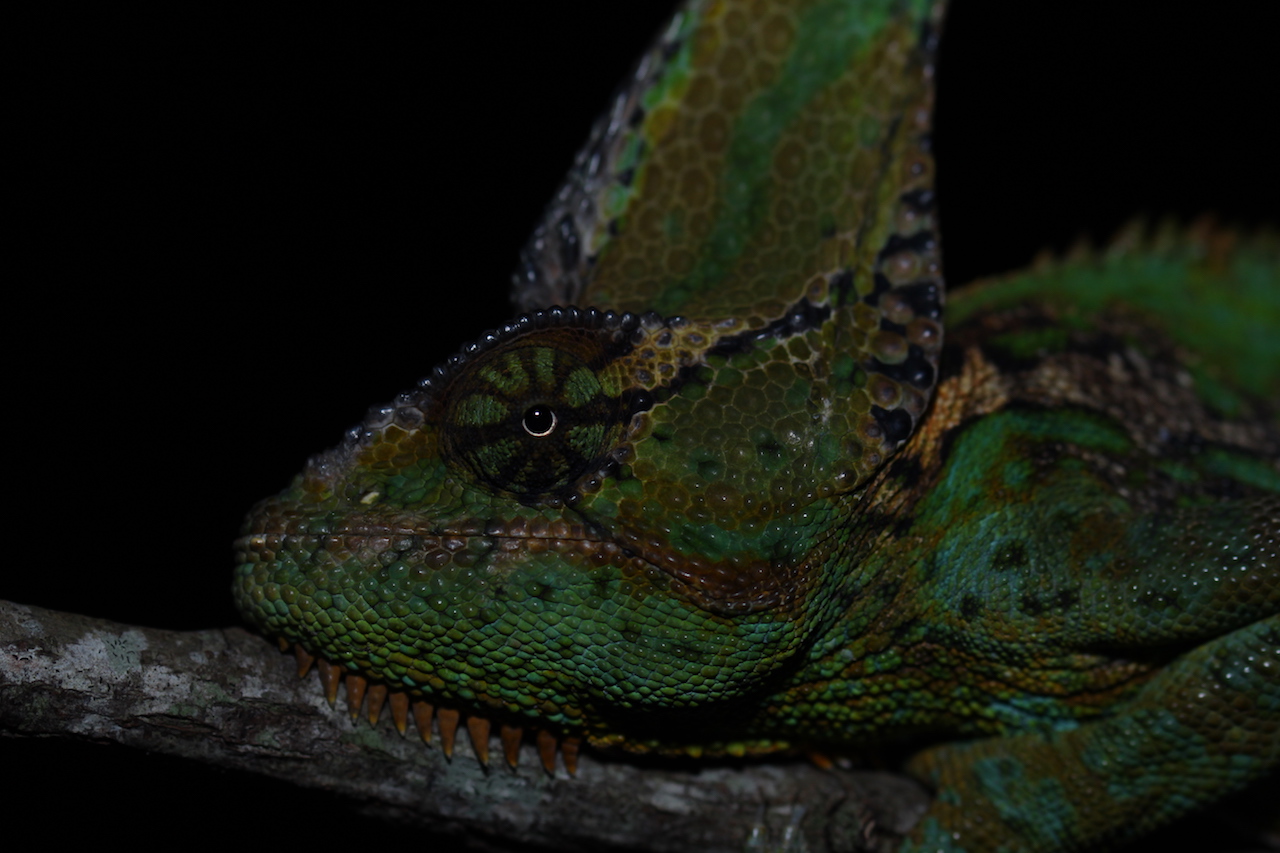
Their colors are fantastic and I love the spirals as they go down the tail. What I love is seeing the prehensile tail and zygodactyl feet which you can see in the top left of the photo.
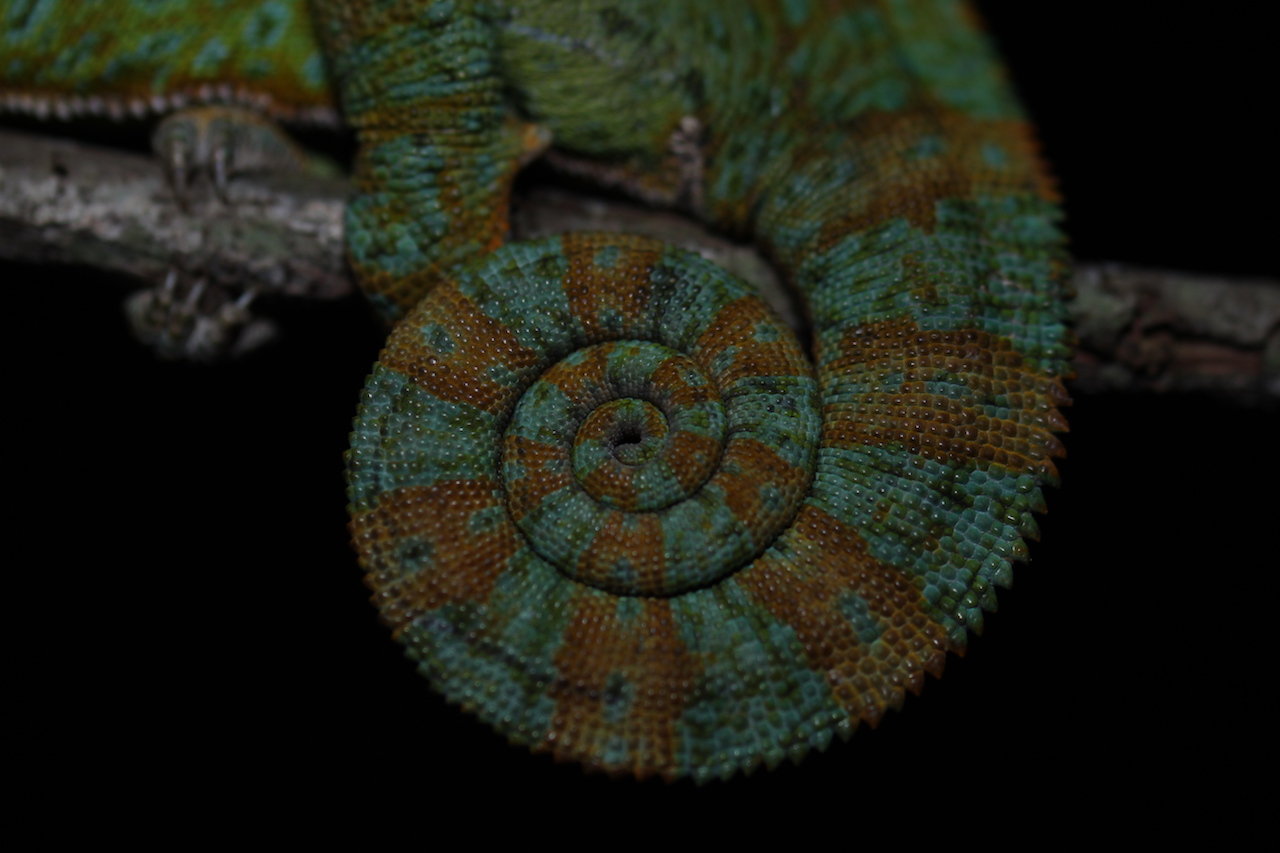
Can’t look at chameleons without focusing on their eyes which have the ability to look in different directions. Weird little watermelons.
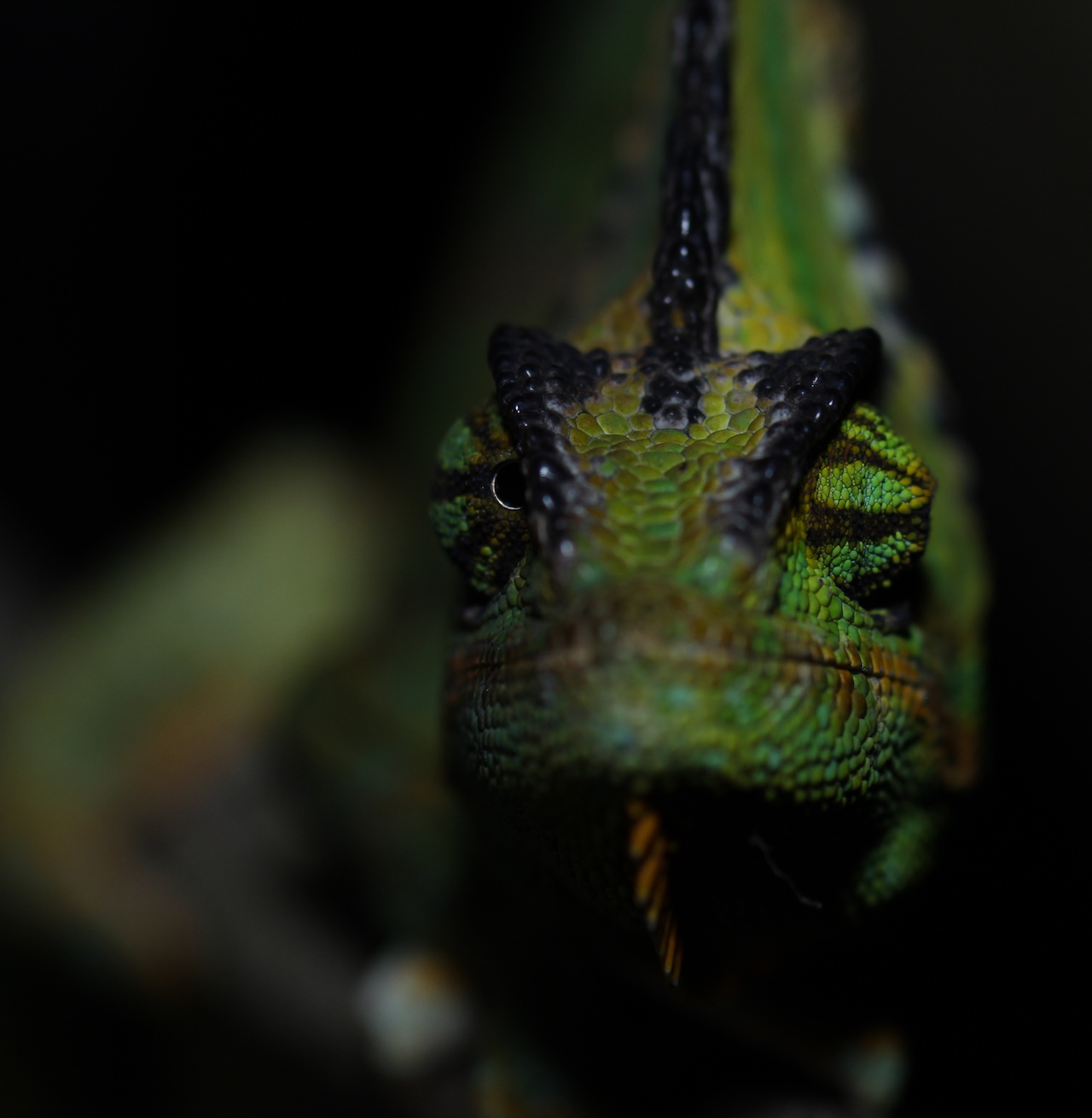
I do acknowledge that chameleons are invasive which made it weird to appreciate them in their non natural habitat. The Florida ecosystems are weird as they are prime habitat for a lot of invasive species. On our trip we came across the following invasives: Brahminy Blind Snakes,brown anoles, cuban treefrogs, igauna, agamas, tegu, and a chameleon. Didn’t even come across a burmese python who may be some of the most well known invasives.
Total Snake Count:
Black Racer 8, Corn Snake 7, Peninsula Ribbonsnake 7, Banded Watersnake 5, Florida Green Watersnake 4, Brown Watersnake 3, Florida Cottonmouth 3, Scarlet Snake 2, Yellow Ratsnake 2, Brahminy Blind Snake 2, Southern Ring Neck 2, Eastern Coral Snake 1, Eastern Gartersnake 1, Florida Brownsnake 1.
Total: 48 Species: 14